The Japanese White Pine Bonsai Tree (pinus parviflora) is a hardy outdoor bonsai species. White Pines are elegant and evergreen, perfect for display
Japanese white pine (pinus parviflora)
Placement
The Japanese white pine bonsai tree is a very hardy species that can tolerate harsh conditions well and should be kept outdoors. Look for a spot that receives bright and full sun, the japanese white pine bonsai tree will not thrive indoors. Pines are tolerant of shade but will grow longer needles to compensate for less light, a feature which is considered undesirable in bonsai art.
Action does not necessarily need to be taken during the winter as these species require a cooler period of about three months but be aware that if the water that the tree is potted in freezes, the japanese white pine bonsai tree will die of dehydration. We recommend protecting your tree from frost and strong winds, and consider using a cold frame or bringing it indoors to an unheated space such as a greenhouse to more safely allow for its dormancy period.
Watering
There is no definitive guide to watering and it should be conducted on an observational schedule, not a routine. This means that it is important to keep an eye on the moisture levels of the soil to avoid over and under watering, both which can lead to dropping leaves and/or root death. The amount of water a bonsai requires depends on pot size, climate, airflow, soil and tree type so it is best to use your eyes and fingers to assess whether the soil is damp, wet or dry. As a general guide, if the top inch or so has dried, it is ready to be watered. When you water, ensure an even coverage over the roots and soil, allowing water to flow out from the bottom of the pot to allow for a good soaking. Never let the soil dry out completely and never let your bonsai sit in water for long periods of time.
Japanese white pine bonsai tree dislike permanent moisture so a well-draining soil is required, and be careful not to overwater. Protect the trees from excess rain while developing because a lot of water will make the needles grow longer than necessary.
Fertilising
Using fertiliser on your Japanese white pine bonsai tree will help encourage healthy growth and this should be done periodically from once a week to every two months and only during the growing season. You can start adding nutrients to your water from March until October and use weekly. If using solid fertilizer, use once every one to two months. With bonsai trees, less is more and we tend to advise using half the recommended dosage to see how your bonsai reacts first.
Pruning and wiring
Pruning your japanese white pine bonsai tree is important not only to maintain or create an aesthetic style but to also ensure light and airflow can reach inner foliage. Japanese white pine bonsai tree grow quickly upwards, at the expense of lower branches and inner shoots. You can pinch back the growing tips during summer to thin out its growth and encourage lower branching and a more balanced structure. When new buds appear, let them grow to around 3cm in length, and then cut them back down with sharp scissors to about halfway. If there are more than two candles on one branch or twig, remove the surplus but be sure to leave two. Do not remove all of the candles at one time as this can result in death of the pine.
Japanese white pine bonsai tree branches are supple and can be bent easily, even into older age. Wire them from early autumn to early spring and leave the wires on for a long while, the white pine grows very slowly and is likely to bend back to its original shape if taken off too early.
Repotting
Repotting your tree is an important way to provide a fresh and suitable soil mix and ensure appropriate root health. As a general rule, you can repot your white pine every other year during spring time, just after the buds begin to swell and extend. You should check if it has become root-bound before you change pots. You can do this by lifting the tree gently out of the pot by the main trunk, and examining the root system. You will know it is ready if you can see that the roots are circling around each other and the pot. If, however they still appear contained in the soil, you should place it back and wait until the following spring to check again. If it is ready for repotting, be sure to use a well-draining soil mix. If required, you can also repot pines in late summer or early autumn when temperatures are not so high anymore but there is still enough time for the tree to regrow fine roots before winter.
Showing all 16 results
-
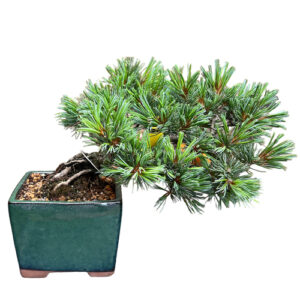
Semi Cascading Japanese White Pine 27cm
£500.00 Add to basket -
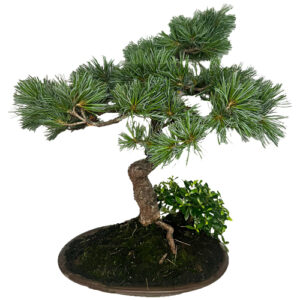
Shallow Pot Japanese White Pine 65cm
£1,100.00 Add to basket -
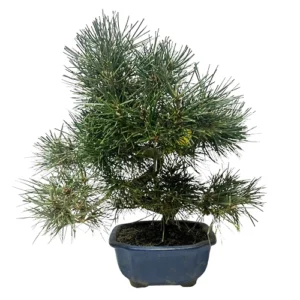
Full Japanese White Pine 36cm
£450.00 Add to basket -
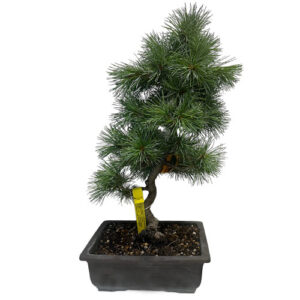
Tall Japanese White Pine 50cm
£600.00 Add to basket -
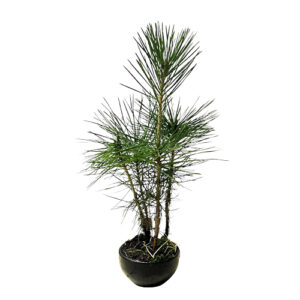
Japanese White Pine 31cm
£65.00 Add to basket -
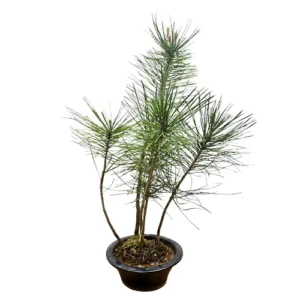
Japanese White Pine 40cm
£65.00 Add to basket -
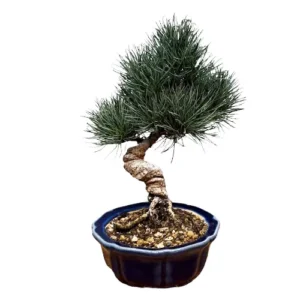
Stumpy Japanese White Pine 25cm
£170.00 Add to basket -
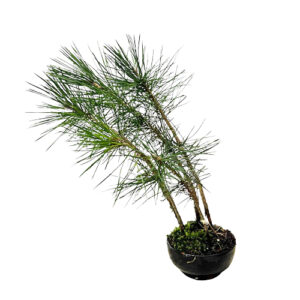
Wind Swept Japanese White Pine 30cm
£65.00 Add to basket -
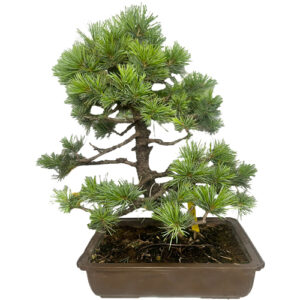
Tilting Japanese White Pine 53cm
£750.00 Add to basket -
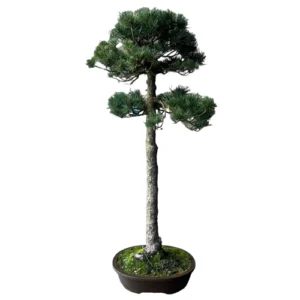
Strait Japanese White Pine 115cm
£1,200.00 Add to basket -
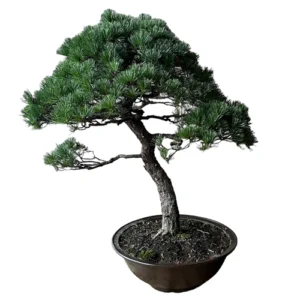
Wide Japanese White Pine 98cm
£2,750.00 Add to basket -
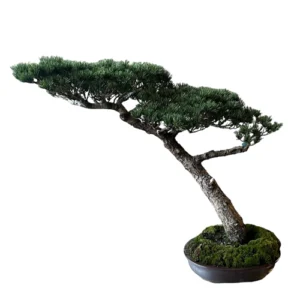
Wind Swept Japanese White Pine 85cm
£2,500.00 Add to basket -
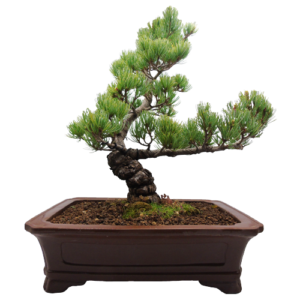
Japanese White Pine
£650.00 Sold -

Triple Trunked Japanese White Pine
£3,000.00 Add to basket -
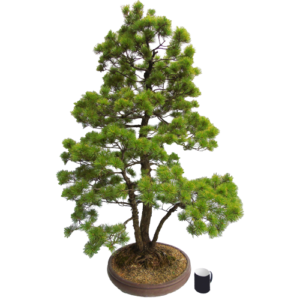
Multi Trunked Japanese White Pine 125cm
£3,500.00 Sold -
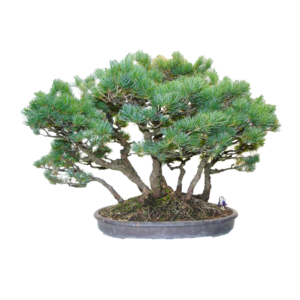
Japanese White Pine Forest
£3,500.00 Sold
